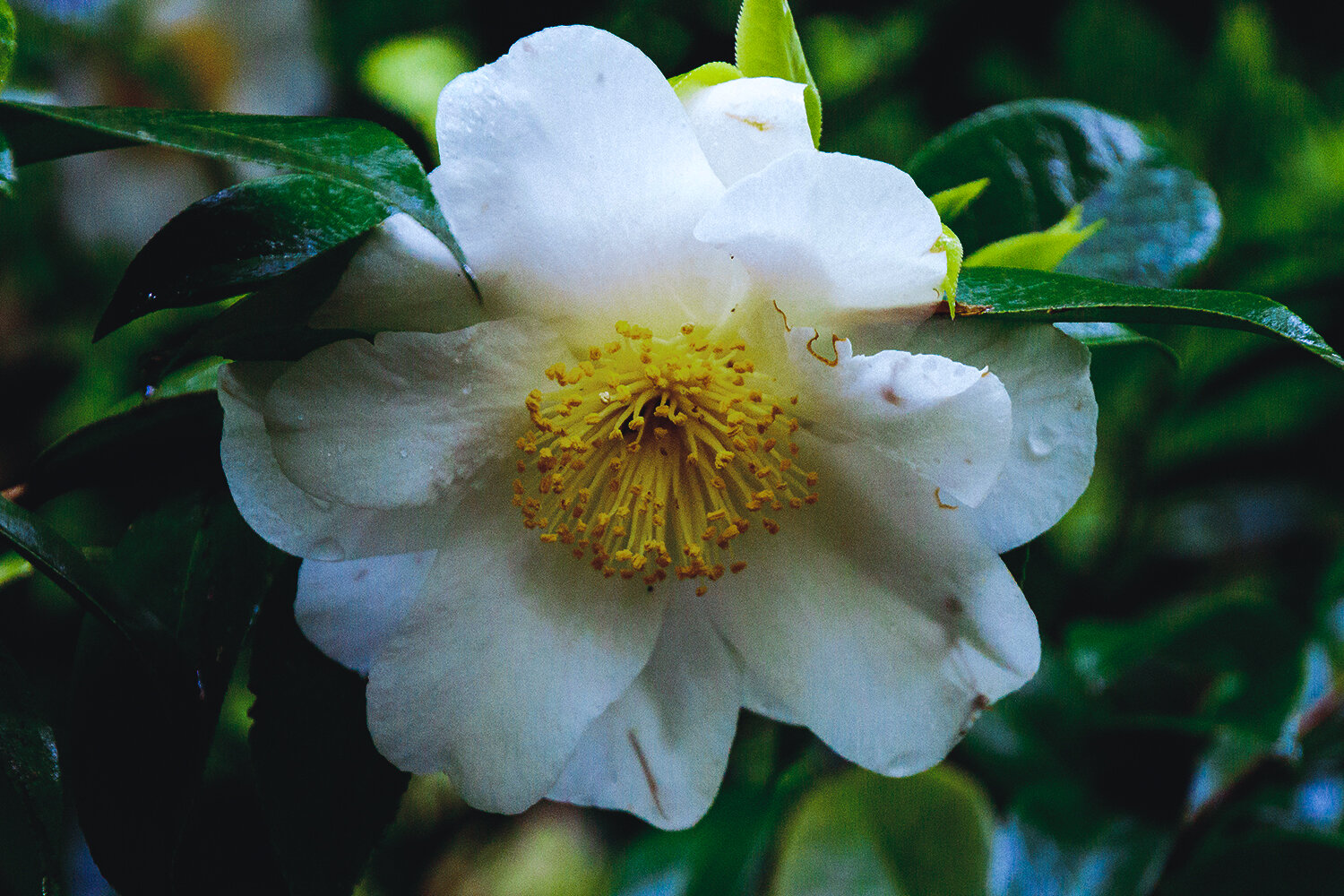What is Chinese Yellow Tea
Yellow tea is the rarest category of tea in the world as only a few places within China actually produce it. Some yellow teas can even sell for thousands of dollars per pound!
Even cooler? Yellow tea goes through a super unique process known as Men Huang, or “yellowing.” As a result, it stands apart from all of the other categories in taste, aroma, and experience. In this guide, we’ll cover what yellow tea is, where it’s grown, why it’s rare, how to brew it, and a lot more.
What Exactly is Yellow Tea?
Yellow tea is one of the 6 categories of tea, which has many similarities to green tea with an additional processing step. The 6 categories of tea are:
White
Green
Yellow
Red (Known as “Black tea” in the West.)
Wu Long (Oolong)
Black (Known as “Dark tea” in the West.)
Yellow tea is arguably the rarest category of Chinese tea because:
It’s the category with the least amount of actual tea produced.
And the category with the fewest regions producing it.
What Makes Yellow Tea Unique?
Yellow tea is referred to as semi-fermented tea, and this is a little difficult to explain but stay with me. Overall, yellow tea processing pretty much mimics green tea processing which is why it looks and tastes similar to green tea. However yellow tea actually has its own distinct flavor and aroma that sets it apart from green tea.
This is all because yellow tea is pushed a little further in processing and is micro-fermented which we’ll cover soon.
Men Huang - Yellowing Processing Step
As I mentioned before, yellow tea is the same as green tea aside from one production step known as Men Huang, or “yellowing.” The tea is effectively smothered in a plastic bag with little to no oxygen. It’s not oxidation that occurs in the bag, but a kind of fermentation.
With Chinese tea, you’ll hear the word fermentation a lot. It’s not (usually) referring to any real bacterial fermentation but rather speaking to the overlapping processing steps of oxidation and enzyme metabolism. It’s actually pretty cool even though it sounds a little boring. This fermentation is controlled through heat and moisture control during processing.
This yellowing step is repeated 3 to 7 times, and it literally “yellows” the color of tea, but more importantly, tames some of the harsher and more astringent notes of the tea. This unique fermentation process enhances umami notes, and gives the tea a rounder, smooth texture with highlighted cereal grain notes.
Yellow Tea History
Yellow tea is considered a historically famous tea meaning it’s long been important in Chinese tea culture and history. Part of the reason yellow tea is famous is that multiple yellow teas have been listed on China’s Ten Famous Teas list
This is a prestigious distinction that notes a tea’s importance. And one yellow tea – Jun Shan Yin Zhen – is considered to be a Chinese tribute tea (or Gong Cha). Tribute teas are famous styles that were once reserved for and presented as gifts to Chinese emperors. This custom solidified yellow tea’s importance in Chinese tea culture and history.
Famous Kinds of Yellow Tea
Jun Shan Yin Zhen (Jun Shan Silver Needle)
Jun Shan Yin Zhen is probably one of the rarest and most expensive teas in the world. Why?
Well, it’s simple –
It’s grown on a small island (called Jun Shan Island in Hunan Province)
There’s very little tea produced yearly (because there are not many tea trees in the area)
And very few people actually know how to make it
Jun Shan Yin Zhen is made from only buds which makes the tea a little sharper than other styles of yellow tea. But this also makes it much more labor-intensive and yields less tea.
Huang Ya
Huang Ya is much more affordable than Jun Shan Yin Zhen. A few locations within China produce it – Meng Ding (in Sichuan) and Huo Shan (In Anhui). While both produce Huang Ya, they’re pretty different from each other. Overall Huang Ya is:
sweet,
a little tannic,
hay-like,
And a little nutty
Taste and Aroma
Yellow tea has a unique flavor and aroma. A lot of new tea drinkers have a difficult time differentiating between green and yellow teas but they’re actually pretty different! The extra processing step makes yellow tea a little more subdued than green tea. Usually more smooth, less aggressive. Because of this, when you actually sit down and drink yellow tea it ‘tastes’ luxurious.
Yellow Tea Taste
Sweet corn
Mellow
Hay-like
Nutty
Yellow Tea Aroma
Sweet
Grassy/ hay-like
Nutty
Herbaceous
Yellow Tea Picking
The picking of yellow tea depends on the style being made.
Jun Shan Yin Zhen
The standard picking grade for Jun Shan Yin Zhen is bud only. Making the tea more subtle, but nuanced because the bud contains more nutrients than a leaf.
Huo Shan Huang Ya
The standard picking grade for Huo Shan Huang Ya is one bud and one leaf. Making it a little stronger and fuller sharper in the flavor than Jun Shan Yin Zhen.
Meng Ding Huang Ya
Usually, bud only. Meng Ding is actually a mountain just outside the city of Ya’an, in the Sichuan province. Commercial tea harvested actually began on this mountain over 2,000 years ago and it still continues today. As someone who has gone to Meng Ding, and drank tea with the farmers there, you really feel connected to the history of Chinese tea. As a result (to me anyway) Meng Ding Huang Ya is a particularly special tea to enjoy.
Yellow Tea Processing
Yellow tea processing is similar to green tea. But there’s one crucial step that’s different – micro-fermentation.
So How is Yellow tea Made?
Processing for yellow tea varies regionally, but essentially these are the steps all yellow tea goes through:
Yellow Tea Processing in a Nut Shell:
First, the leaves are picked.
Then they’re laid out to wither - a step that helps control moisture in the tea and builds flavor.
Next, the leaves go through a “Kill Green” process in which the leaves are heated in a wok, which usually stops any enzymatic or chemical reactions in the tea. I say usually because, for yellow tea, this process is done for a short period of time at a lower temperature. Meaning the enzymes are still a little active.
Next, the crucial micro-fermentation step happens known as Men Huang, or “yellowing.” The tea is covered or sealed in a bag to remove oxygen, and is repeatedly allowed to micro-ferment in a humid, oxygen-low environment.
After this step, the tea is baked dry.
Yellow Tea Oxidation Level
Yellow tea is fermented about 10-20%... though this isn’t easy to confirm. Why? Because typically oxidation isn’t really considered when making Yellow tea in the same way as it is when making Wu Long (Oolong), Red, or event green. Making it “micro-fermented” – or only slightly oxidized comparatively. To our knowledge, in the “tea world”, you won’t hear people talking about “oxidation percentages” when speaking about yellow tea.
What Makes Yellow Tea Different From Other Kinds of Chinese Tea?
Yellow is its own distinct category of tea because of this fermentation and oxidation process. No other category of tea is fermented in this unique way – Where the leaves are wrapped in cloth and are allowed to ferment. So the processing, taste, aroma all make yellow tea different from other kinds of tea.
Yellow Tea Benefits
Yellow tea isn’t necessarily any healthier or less healthy than other categories of tea. Tea, generally speaking, is a healthy beverage as it’s full of antioxidants and polyphenols that make it incredibly beneficial.
But tea isn’t a medicine. Drink it because it tastes good, not for any health benefits. The amount of health benefits varies greatly from tea to tea because there are so many things that impact the number of healthy compounds. Generally speaking there is more nutrient “punch” in Matcha, as you’re consuming the entire leaf.
Does Yellow Tea Have Caffeine?
Yes. Yellow tea does contain caffeine. And in fact, all tea contains caffeine. Herbal “teas” are not tea at all, and are considered Tisanes. To be considered tea, the leaves must be from the tea plant, or Camellia Sinensis. You can learn more about it in our caffeine in tea article.
Yellow Tea FAQ
Is Yellow Tea the Same as Green Tea?
No. Yellow tea and green tea are two distinct categories of tea and they go through slightly different processing steps which makes them a bit different. It’s a little difficult to tell them apart when you’re just getting into tea but yellow tea is a little deeper, sweeter, and milder than green tea.
How to Store Yellow Tea
The best way to store yellow tea (and almost all tea) is in airtight containers. Tea is super absorbent so it’ll pick up a lot of unwanted flavors or aromas if you store in a bad place (like a kitchen or basement). Tea is also pretty sensitive to oxidation meaning it shouldn’t be exposed to excessive amounts of air. Oxidation makes tea go stale and the tea won’t taste the way it should the more it oxidizes.
Does Yellow Tea Go Bad?
Yellow tea can oxidize which means it starts to change in flavor when it’s exposed to air. Put Simply: drink it when it’s fresh. It’ll exhibit the best flavors and aromas when it’s young. With that being said, a year or two of proper storage (airtight, light-tight) should prolong the life of the tea. Even if it’s older than this, it’s still very drinkable, it may just taste a little different than it does when it’s younger.
How to Brew Chinese Yellow Tea
Brewing yellow tea isn’t too difficult but I highly recommend brewing it in a more traditional way (which is actually much less difficult than you’d think.) This ensures you’ll taste all of what the tea has to offer and that the flavors or aromas won’t be diluted (which happens when you brew in a western style that uses way too much water and way too little tea leaf). The most important things to remember when brewing yellow tea:
Use lower temperature water (~80°C/ 176°F)
Brew uncovered
Keep the leaves underwater between brews
Grandpa Style
In yellow tea growing regions, tea leaves are simply dropped in a glass and hot water is poured over them. This is a more traditional way of brewing Chinese yellow tea. This way of brewing is called “grandpa’s style” or “farmer’s style” and it’s the simplest way to enjoy yellow tea (and green or white tea too.)
Here’s how to brew this way:
Bring water to a boil then let it cool to 80°C (176°F)
Add 2-4 grams of yellow tea to a glass (7-12 oz)
filling about ¾ of your glass with the cooled water.
Let the leaves brew for a few minutes
Sip and strain with your tea. But be sure to keep leaves underwater between brews or they will oxidize and the flavor will change.
Re-brewing is simple, just reboil water to 100°C or 212°F and add to your glass. (be careful not to hot the leaves with the really hot water, try aiming for the wall of the glass)
Western Style
You’ll decent results brewing yellow tea in a Western-style teapot, but it’s not what we’d suggest. The above method makes a much tastier cup of tea. To make tea in the Western Style:
Weigh out 2-5 g of yellow tea (more leaf equals stronger tea)
Place leaves in your teapot.
Fill with hot water (176°F or 80°C) – about 12-24 ounces depending on the teapot.
Brew for 3-5 minutes. Then pour.
Rebrew by adding just boiled water for an additional 3-5 minutes.
MORE ON CHINESE TEA




